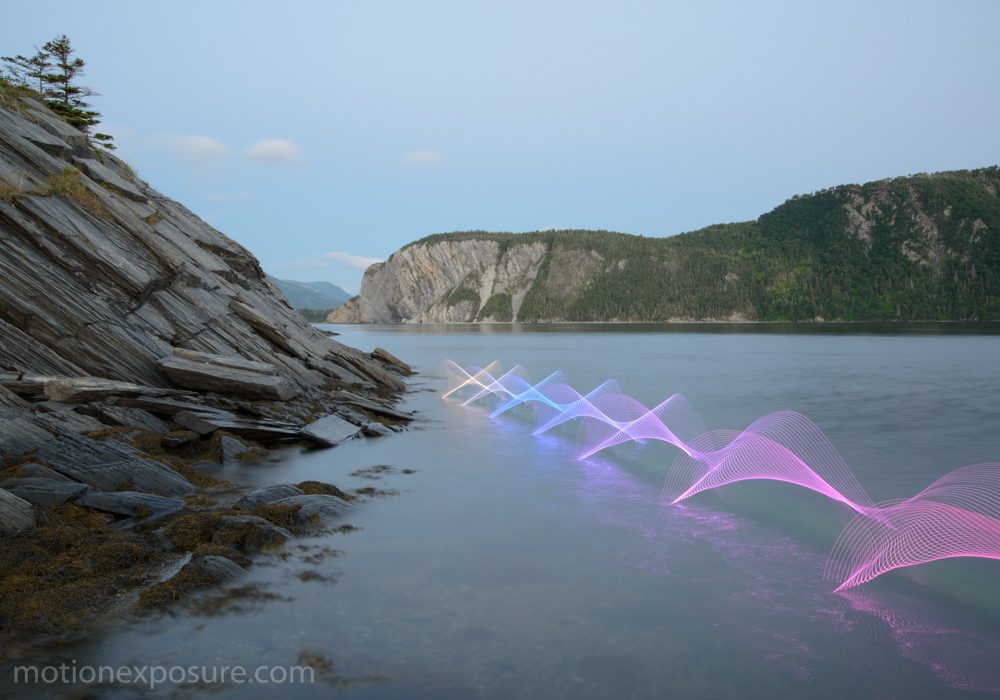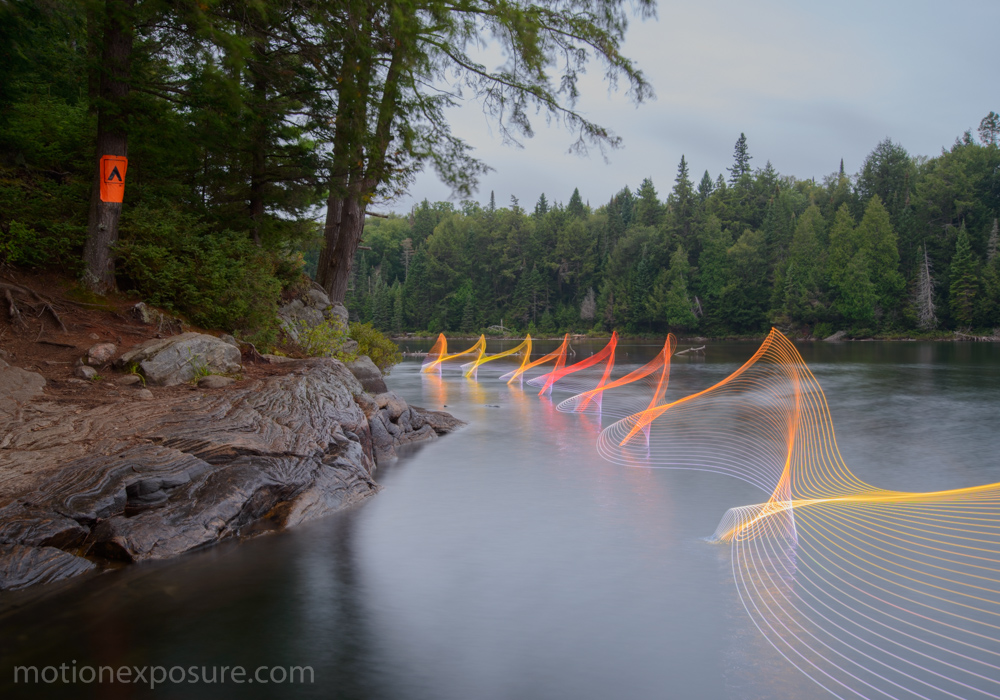How Photographer Stephen Orlando Captures Color and Light in Motion
October 2018 - by SORAA
I like this
The wilderness is replete with objects moving at various speeds. Walk into a forest, and you might spot a snail inching slowly across a forest floor, or hummingbirds flapping their wings so rapidly you can barely see them. Perhaps you pause for a moment to skip stones across a still lake, or make a wish before blowing dandelion flowers and sending their seeds into the air. But what happens when vibrant colors, light and photography are thrown into the mix?
Canadian photographer Stephen Orlando helps viewers experience movement in novel ways across natural and urban landscapes. One of his most colorful photography series, “Motion Exposure,” chronicles the movement of kayak and canoe paddles on bodies of water across Canada and Italy. What might seem like conventional movements take on new life when observing Orlando’s long-exposure photographs, inspiring viewers to stop and think about everyday experiences with a more colorful—and insightful—perspective. Read our exclusive interview with Orlando to discover how he tells the story of movement with color, light and photography.
SORAA: What inspired “Motion Exposure”?
Stephen Orlando: Inspiration came from two primary sources: My love of canoeing and kayaking in the Canadian wilderness, and my background as an aerodynamicist. I find a strong parallel between the shape of streamlines and the lines of light in my photos showing the paths of objects. Generally, I am inspired by the works of pioneering light painter Gjon Mili, and Christo and Jeanne-Claude.
S: Why did you choose colorful lighting as medium?
SO: Colorful lighting is the best way to trace out the path of an object with a long exposure photo. By attaching color-changing LED lights to an object like a kayak paddle, violin bow, or a person’s leg, I’m able to reveal the object’s path in a single photo. These light trails have not been artificially created in post-production and the photos are not composite images.
S: Is there a specific reason for choosing multiple colors?
SO: I use changing colors to convey the sense of time. My photos represent a period of time as opposed to an instant in time, and the changing colors help communicate that.
S:How does this project complement surrounding spaces?
SO: Paradoxically, the lines of light are both a natural and foreign addition to the watery scene. On one hand, the lights show the actual path of the paddle that occupied that space over a period of time. On the other hand, brightly colored lines, at the outset, are completely alien to the scene. The lines of light tell the story of movement of what happened in that space.
S: What feedback have you received regarding “Motion Exposure”?
SO: People are always amazed that these photos are single exposures done without Photoshop. I find that if you tell someone a photo has been edited with Photoshop, most of the time, the conversation ends and they aren’t interested in how the photo was created. But when I tell someone that what they’re looking at is what comes out of the camera, they immediately have more questions.
The first question I always get is this: How come I can’t see the canoe? For the kayak and canoe photos, the shutter speed is 10 to 30 seconds, depending on the photo. The photos are taken in low light conditions so that the background is properly exposed. Since the photos are taken in low light conditions, the only things that will show up in the photo are either very bright or stationary.
The trees in the background are dark but stationary, so they get exposed in the photo. The LED lights are very bright so they emit a large amount of light for every point in space and get exposed in the photo. The canoeist does not emit much light, and since it is moving, it is not in the same location long enough to be exposed on the camera’s sensor.
S: What were some of the biggest challenges you faced while working on “Motion Exposure,” and how did you solve them?
SO: There is a small window of time at dusk when the light is just right to take these photos. This is the biggest challenge to taking these photos since I only get a few good shots per day. A helpful group of friends that can move quickly with me is the key to getting these good shots.
S: Did this project meet your expectations?
SO: The first motion exposure photos I took were of canoeing motion done well after sunset. Since it was so dark, the background did not get exposed in the photo. The result was some interesting lines on a black background, and as a result, there was no context. Since then, I always shoot at dusk so that the background is visible and there is more context to the photos.
S: What do people learn from experiencing “Motion Exposure”?
SO: On a basic level, people get a better idea of what can be done with long exposure photography. They also learn more about the paths of common objects.
S: What do you want the audience to gain from this work?
SO: It is my hope that when people see my photos, they imagine themselves going through the movements they see in front of them. I think my photos have brought a smile to many people’s faces, however, which is one of the best rewards.






